Fine leaf Indian fern
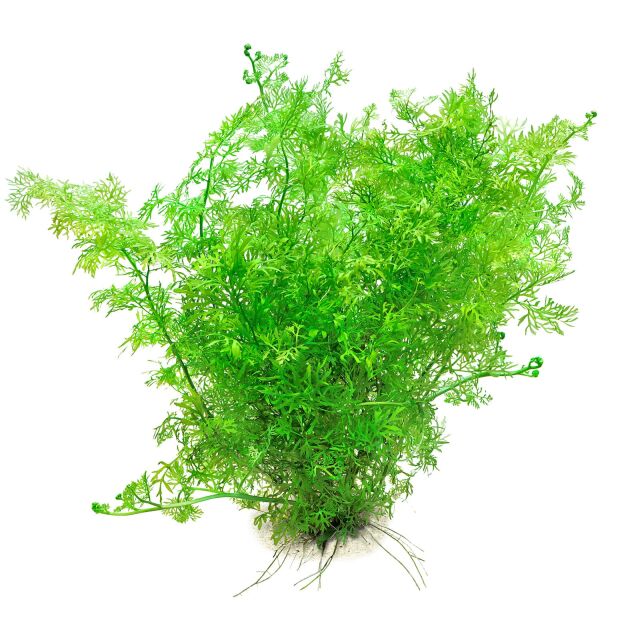
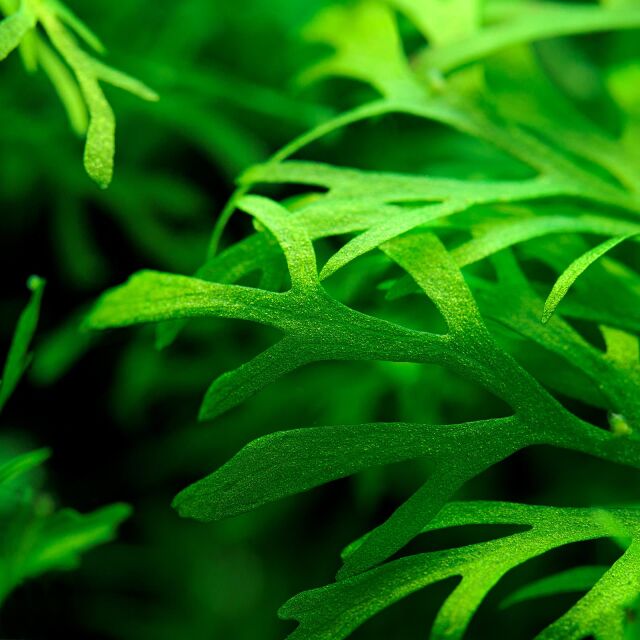
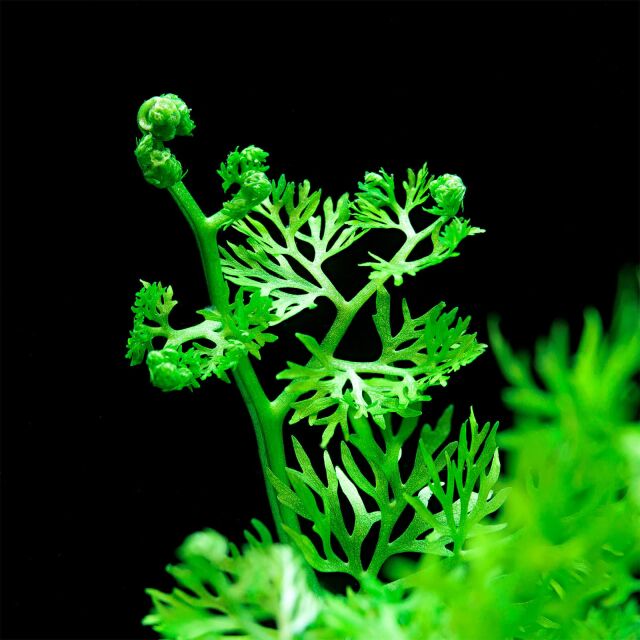
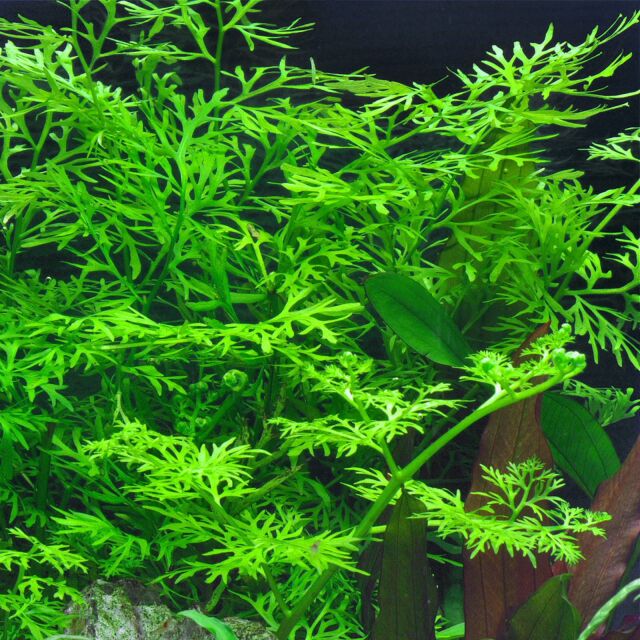
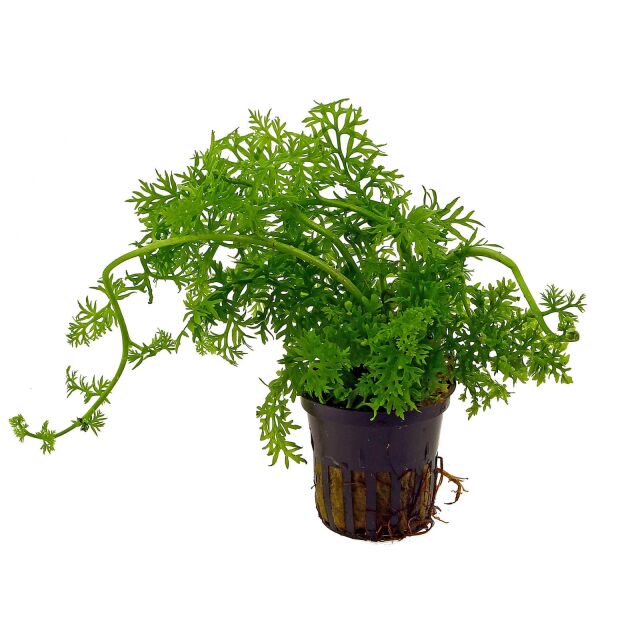
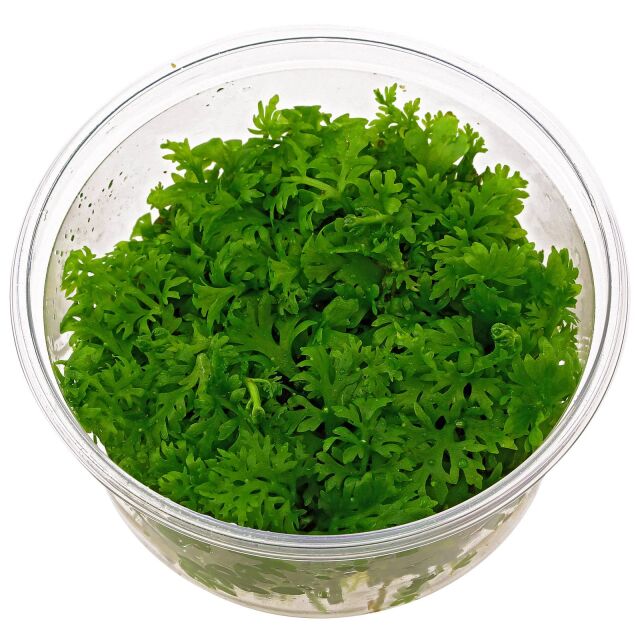

Ceratopteris thalictroides
Fine leaf Indian fern
- Also known as Ceratopteris thalictroides "Fein"
- Fine-leaved
- Fast growing
- Not demanding
- Also suitable as floating plant
Item question
We’re here for you!
Please enter your question and e-mail and we’ll contact you as soon as possible. It usually takes us up to 24 hours during business days to respond.
Thank you for your question!
Thank you, we’ll get in touch!
Close window
You already sent us a question.
Please wait a few minutes
Description
The Water Sprite or Fine leaf Indian fern is a highly decorative, fast growing fern that’s suitable as solitary plant in larger tanks. It is also labeled Ceratopteris siliquosa and C. thalictroides "Fein". Its leaves are large, finely dissected fronds, getting about 30 - 50 cm long and up to 30 cm wide.

Pinnae of a frond of the Fine leaf Indian fern, Ceratopteris thalictroides
This aquatic fern grows submerged and also as a floating plant. It is recommended to put the leaf rosette of Ceratopteris species not too deeply into the substrate. The "heart" of the plant where new fronds develop should remain above the bottom surface.
However, when water sprite is delivered as potted plant, it often has hardly roots and detaches easily from the rockwool substrate during transport. But the plants will grow new roots in the aquarium. They can be floated until the roots are long enough for planting, or pinned onto the ground with a plant pin (e.g. JBL - ProScape - Plantis) right away. New plantlets may sprout on broken leaves.

Sprouting frond tip of the Fine leaf Indian fern, Ceratopteris thalictroides
Also the planting of young Ceratopteris plants from tissue culture may be somewhat difficult. The plantlets are often entangled and not easy to separate from each other. Also in this case they can be floated until their roots are grown longer. It is also possible to plant or attach clumps of several plants.
Ceratopteris thalictroides is an amphibic fern found in many tropical regions of the world in shallow waters and on muddy ground, amongst others in rice paddies. In some tropical regions of Asia the emersed leaves of this species are used as vegetable. In nature, this plant is said to be an annual plant, however, it can be cultivated over several years without problems. The species contains many local forms, and in aquaristics, varietys with more coarsely or finely pinnate submersed leaves are common (photos 1 to 3 show an especially delicate form of C. thalictroides). The species has been known in the hobby for many years, also under the synonym of Ceratopteris siliquosa as well as under the vernacular names of water sprite, Indian fern, Oriental waterfern and water hornfern. (read more)
| Synonyms | Acrostichum thalictroides L., Ceratopteris froesii Brade, Ceratopteris gaudichaudii Brongn., Ceratopteris siliquosa (L.) Copel. |
| Complete botanical name | Ceratópteris thalictroídes (L.) Brongn. |
| Family | Pteridaceae |
| Genus | Ceratopteris |
| Difficulty | medium |
| Usage | Background, Plant for spawning, Midground, Specimen plant, Water surface |
| Growth | very fast |
| pH value | 5 - 8 |
| Temperature tolerance | 18 - 30°C |
| Carbonate hardness | 0 - 21°dKH |
| General hardness | 0 - 30°dGH |
| Propagation | Proliferating leaves, Spores |
| Can grow emersed? | yes |
| Source | Flowgrow |
| Synonyms |
| Acrostichum thalictroides L., Ceratopteris froesii Brade, Ceratopteris gaudichaudii Brongn., Ceratopteris siliquosa (L.) Copel. |
| Complete botanical name |
| Ceratópteris thalictroídes (L.) Brongn. |
| Family |
| Pteridaceae |
| Genus |
| Ceratopteris |
| Difficulty |
| medium |
| Usage |
| Background, Plant for spawning, Midground, Specimen plant, Water surface |
| Growth |
| very fast |
| pH value |
| 5 - 8 |
| Temperature tolerance |
| 18 - 30°C |
| Carbonate hardness |
| 0 - 21°dKH |
| General hardness |
| 0 - 30°dGH |
| Propagation |
| Proliferating leaves, Spores |
| Can grow emersed? |
| yes |
| Source |
| Flowgrow |
How many plants do I need?
General information
Please choose a variant to see more information.
| Item no. |
|
| EAN | |
| Weight | |
| Shipping weight |
Customers ask customers
You have questions about this product? Ask other customer or our support team about this product!
Customer reviews
2 Reviews
| 5 Stars(2) |
|
| 4 Stars(0) |
|
| 3 Stars(0) |
|
| 2 Stars(0) |
|
| 1 Star(0) |
|